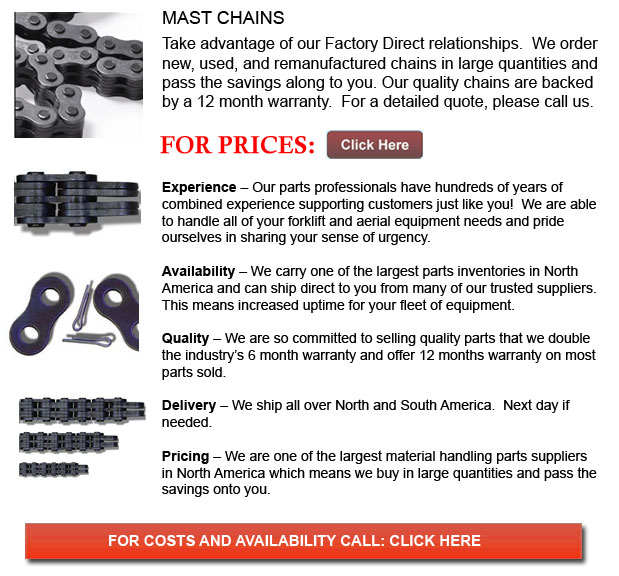
Forklift Mast Chain - Leaf Chains comprise various functions and are regulated by ANSI. They are meant for lift truck masts, for low-speed pulling and tension linkage, and as balancers between head and counterweight in some machine devices. Leaf chains are at times even referred to as Balance Chains.
Construction and Features
Made of a simple pin construction and link plate, steel leaf chains is identified by a number which refers to the lacing of the links and the pitch. The chains have particular features like for instance high tensile strength for each section area, that allows the design of smaller mechanisms. There are B- and A+ type chains in this particular series and both the BL6 and AL6 Series comprise the same pitch as RS60. Finally, these chains cannot be driven using sprockets.
Handling and Selection
Comparably, in roller chains, all of the link plates have higher fatigue resistance because of the compressive stress of press fits, while in leaf chains, just two outer plates are press fit. The tensile strength of leaf chains is high and the utmost permissible tension is low. When handling leaf chains it is essential to confer with the manufacturer's manual to be able to guarantee the safety factor is outlined and utilize safety guards at all times. It is a better idea to carry out extreme caution and use extra safety measures in applications wherein the consequences of chain failure are serious.
Higher tensile strength is a direct correlation to the utilization of much more plates. Because the utilization of much more plates does not improve the most acceptable tension directly, the number of plates may be limited. The chains need frequent lubrication because the pins link directly on the plates, producing a really high bearing pressure. Using a SAE 30 or 40 machine oil is normally advised for nearly all applications. If the chain is cycled over 1000 times each day or if the chain speed is over 30m for every minute, it will wear very fast, even with continuous lubrication. Hence, in either of these situations utilizing RS Roller Chains will be much more suitable.
The AL-type of chains must just be used under particular conditions such as if wear is really not a huge problem, if there are no shock loads, the number of cycles does not go over a hundred a day. The BL-type would be better suited under various situations.
The stress load in parts will become higher if a chain using a lower safety factor is chosen. If the chain is also used among corrosive conditions, it could easily fatigue and break really quick. Doing regular maintenance is vital when operating under these types of conditions.
The type of end link of the chain, whether it is an inner link or outer link, determines the shape of the clevis. Clevis connectors or Clevis pins are made by manufacturers but often, the user provides the clevis. A wrongly constructed clevis can lessen the working life of the chain. The strands should be finished to length by the manufacturer. Check the ANSI standard or call the maker.
![]() Click to Download the pdf
Click to Download the pdf
Forklift Parts
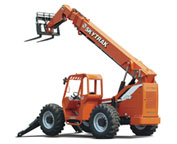
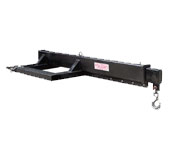
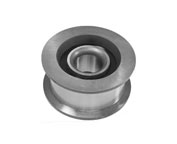
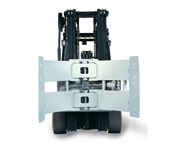
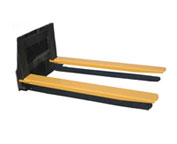
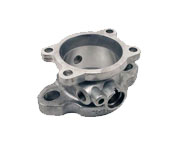
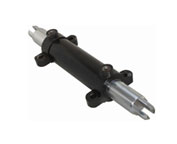
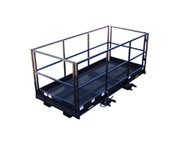
Lift Parts Express
TOLL FREE: 1-888-695-7994
LOCAL: (661) 237-1012
4208 Rosedale Hwy 302-317
Bakersfield, California
forkliftpartsbakersfield.com
Email Us
About Us


